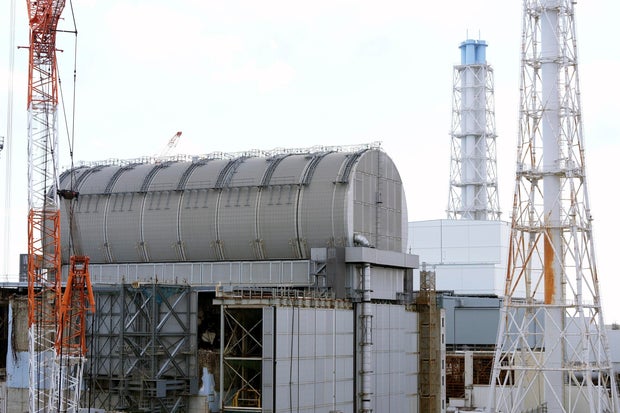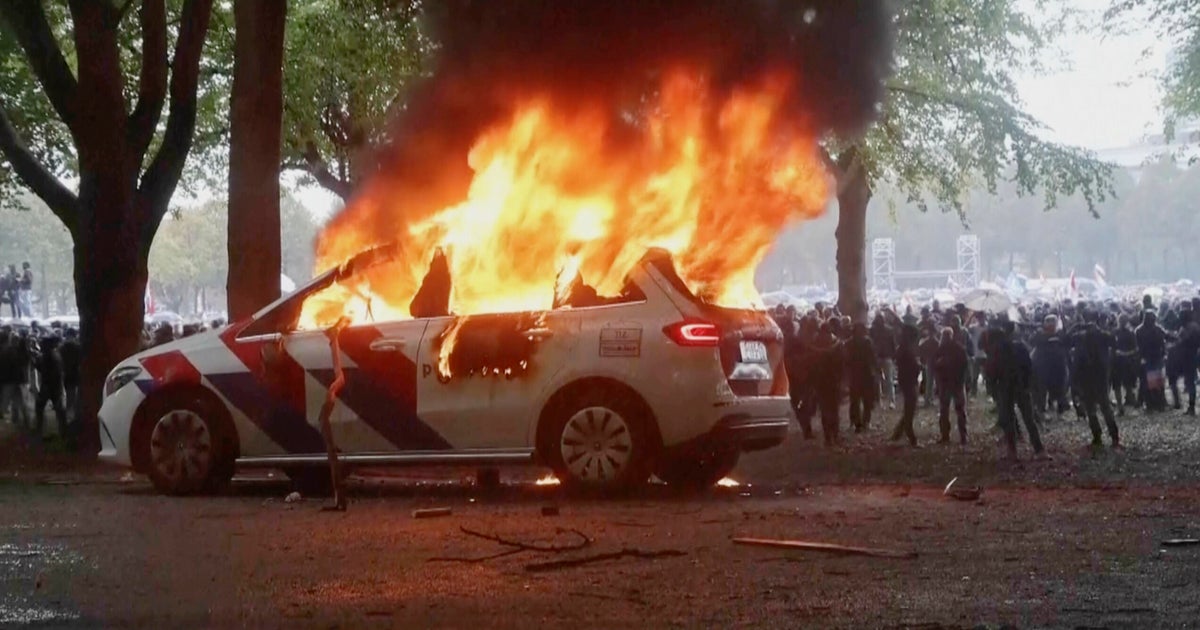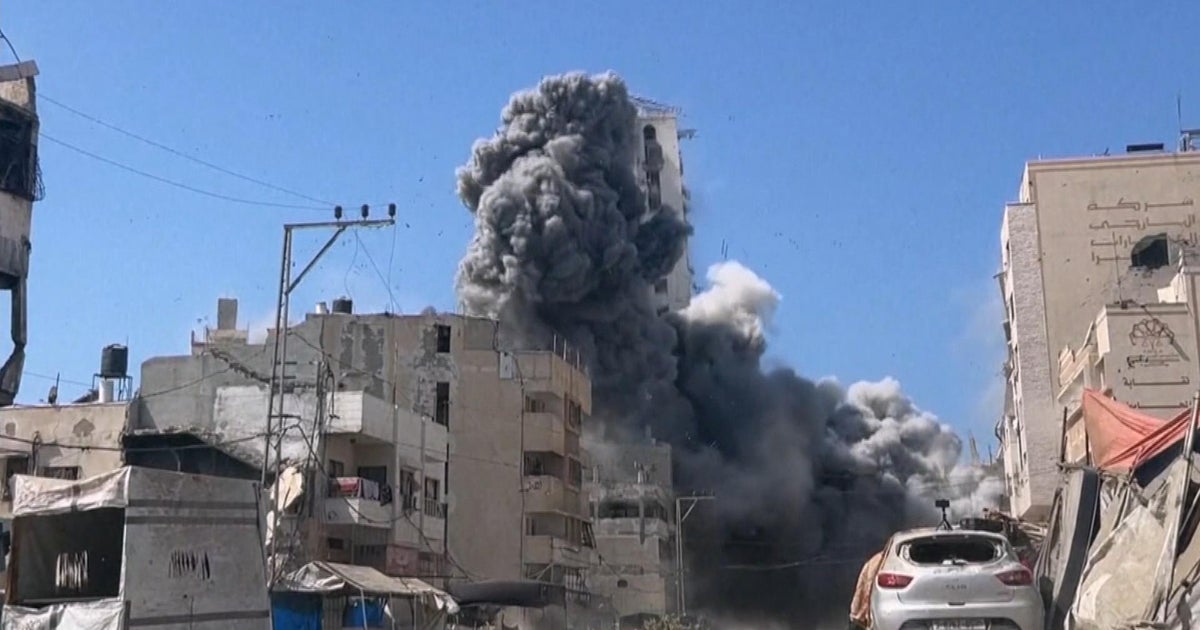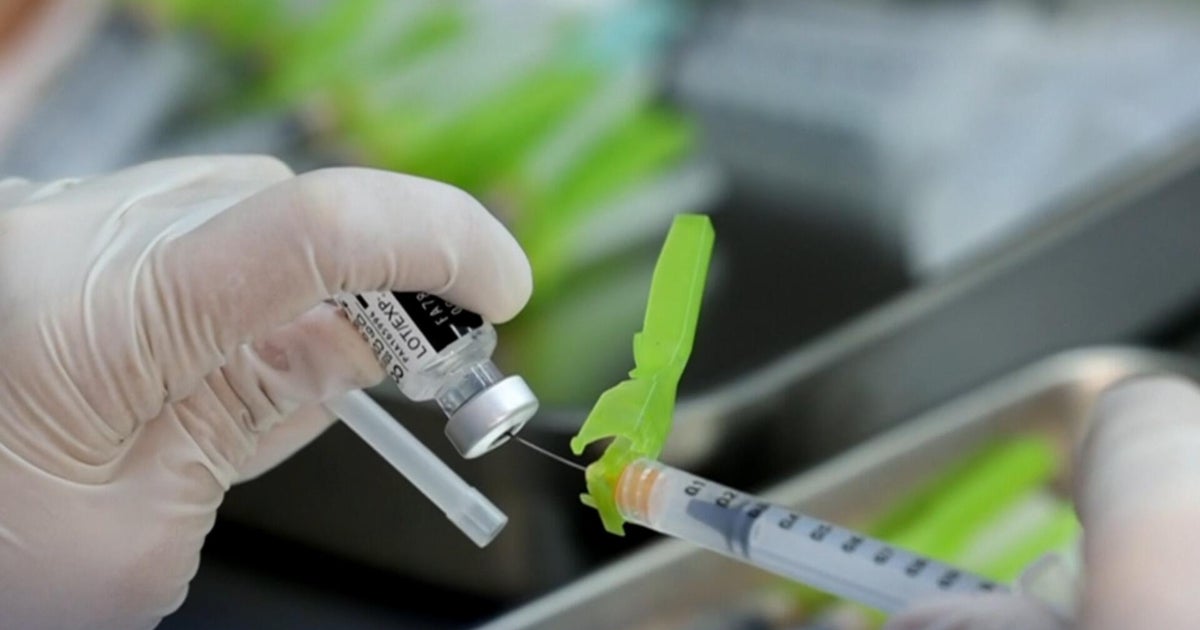The start of full-scale removal of melted fuel debris at the tsunami-wrecked Fukushima Daiichi nuclear power plant in Japan will be delayed for several years, the latest setback announced by the plant's operator.
The Tokyo Electric Power Company Holdings, or TEPCO, said it will need 12 to 15 years of preparation – or until 2037 or later – before starting the full-scale removal of melted fuel debris at the No. 3 reactor. The preparation, it said, includes reducing radiation levels and building necessary facilities in and around the reactor.
 The Unit 3 reactor, covered with protective housing at the Fukushima Daiichi nuclear power plant, is run by Tokyo Electric Power Company Holdings (TEPCO).
Eugene Hoshiko / AP
The Unit 3 reactor, covered with protective housing at the Fukushima Daiichi nuclear power plant, is run by Tokyo Electric Power Company Holdings (TEPCO).
Eugene Hoshiko / AP
Overall, at least 800 tons of melted nuclear fuel have mixed with broken parts of internal structures and other debris inside the three reactors that suffered meltdowns after the 2011 earthquake and tsunami.
The delay again sets back the 2051 target set by Japan's government and TEPCO for decommissioning the plant.
A test retrieval of a tiny sample of melted fuel debris in November was already three years behind, and some experts estimate that the decommissioning work could take more than a century.
TEPCO said it plans to stick to the current completion target of 2051.
"Realistically, we are aware of the difficulty (to achieve the target) but we will not drop the goal just yet, as we still don't have a clear work schedule after the full-scale removal begins," said Akira Ono, chief decommissioning officer at TEPCO.
Ono said TEPCO plans to examine preparation work necessary at the two other reactors within the next couple of years, ahead of full-scale melted fuel retrieval.
After small missions by robots to gather samples, experts will determine a larger-scale method for removing melted fuel, first at the No. 3 reactor.
In March 2024, TEPCO released a dozen images taken by the miniature drones sent deep into a badly damaged reactor at the plant, showing displaced control equipment and misshapen materials. The photos were the first from inside the main structural support called the pedestal in the hardest-hit No. 1 reactor's primary containment vessel, an area directly under the reactor's core.


















































